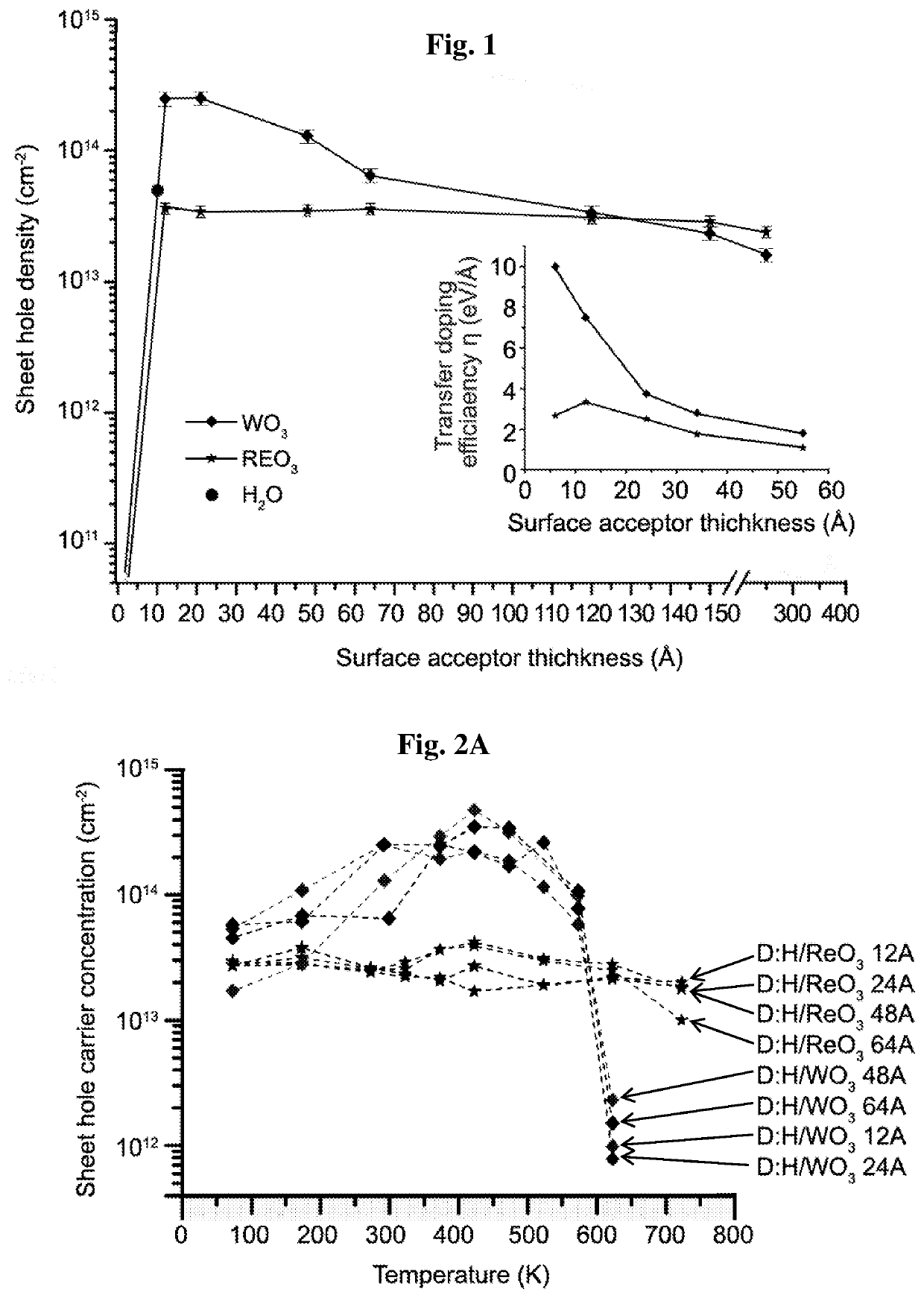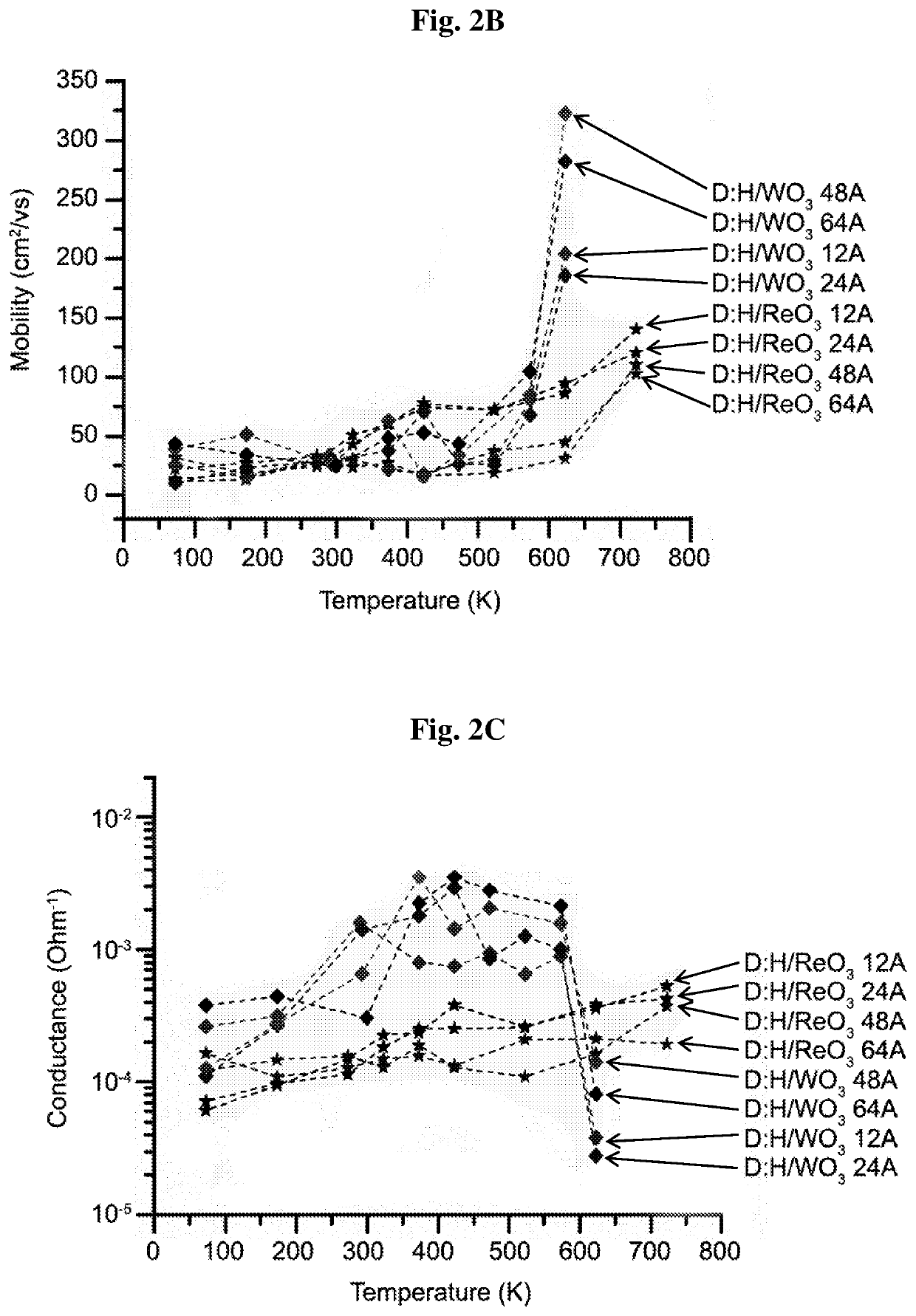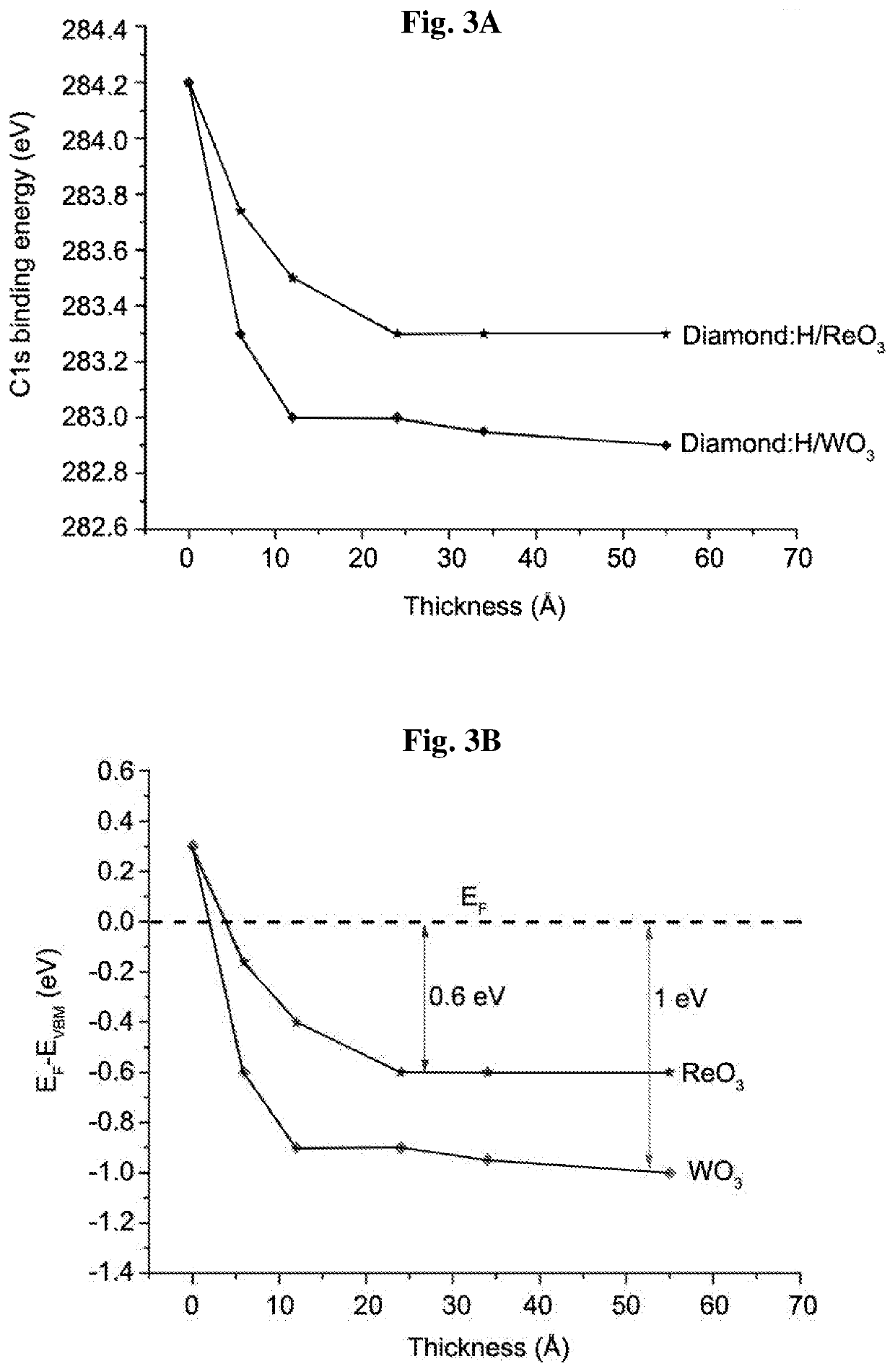Transition-metal oxides-coated hydrogen-terminated diamond surface and uses thereof
a hydrogen-terminated diamond surface and transition metal oxide technology, applied in non-metal conductors, electric discharge tubes, semiconductor devices, etc., can solve the problems of loss of conductivity upon heating, no satisfactory and robust solution has yet been offered for ensuring sustainability, and all the above approaches have considerable limitations
- Summary
- Abstract
- Description
- Claims
- Application Information
AI Technical Summary
Benefits of technology
Problems solved by technology
Method used
Image
Examples
examples
[0050]Study 1. Boosting Surface Charge-Transfer Doping Efficiency and Robustness of Diamond with WO3 and ReO3
[0051]Disclosed herein is the use of WO3 and ReO3 as direct surface electron acceptor layers for the TD of the diamond:H surface. WO3 TD is found to yield a p-type conductive surface layer at a close diamond:H interface proximity with electrical properties significantly superior to those induced by other materials reported so far (FIG. 1). The areal hole density at room temperature vs. thickness coverage, as measured by Hall effects, is found to reach a record value of up to 2.52×1014 cm−2 at the very first monolayers of coverage (from 1.2 nm to 4.8 nm) for WO3. For ReO3, a value in the range of 2.87-3.63×1013 cm−2 is shown for the different thicknesses. Hall effect measurements as a function of temperature for diamond:H / ReO3 layers show an impressive electrical stability of up to at least 450° C., while diamond:H / WO3 loses its high electrical performance after 300° C.
[0052]...
PUM
| Property | Measurement | Unit |
|---|---|---|
| sheet conductance | aaaaa | aaaaa |
| sheet conductance | aaaaa | aaaaa |
| width | aaaaa | aaaaa |
Abstract
Description
Claims
Application Information
 Login to View More
Login to View More - R&D
- Intellectual Property
- Life Sciences
- Materials
- Tech Scout
- Unparalleled Data Quality
- Higher Quality Content
- 60% Fewer Hallucinations
Browse by: Latest US Patents, China's latest patents, Technical Efficacy Thesaurus, Application Domain, Technology Topic, Popular Technical Reports.
© 2025 PatSnap. All rights reserved.Legal|Privacy policy|Modern Slavery Act Transparency Statement|Sitemap|About US| Contact US: help@patsnap.com



